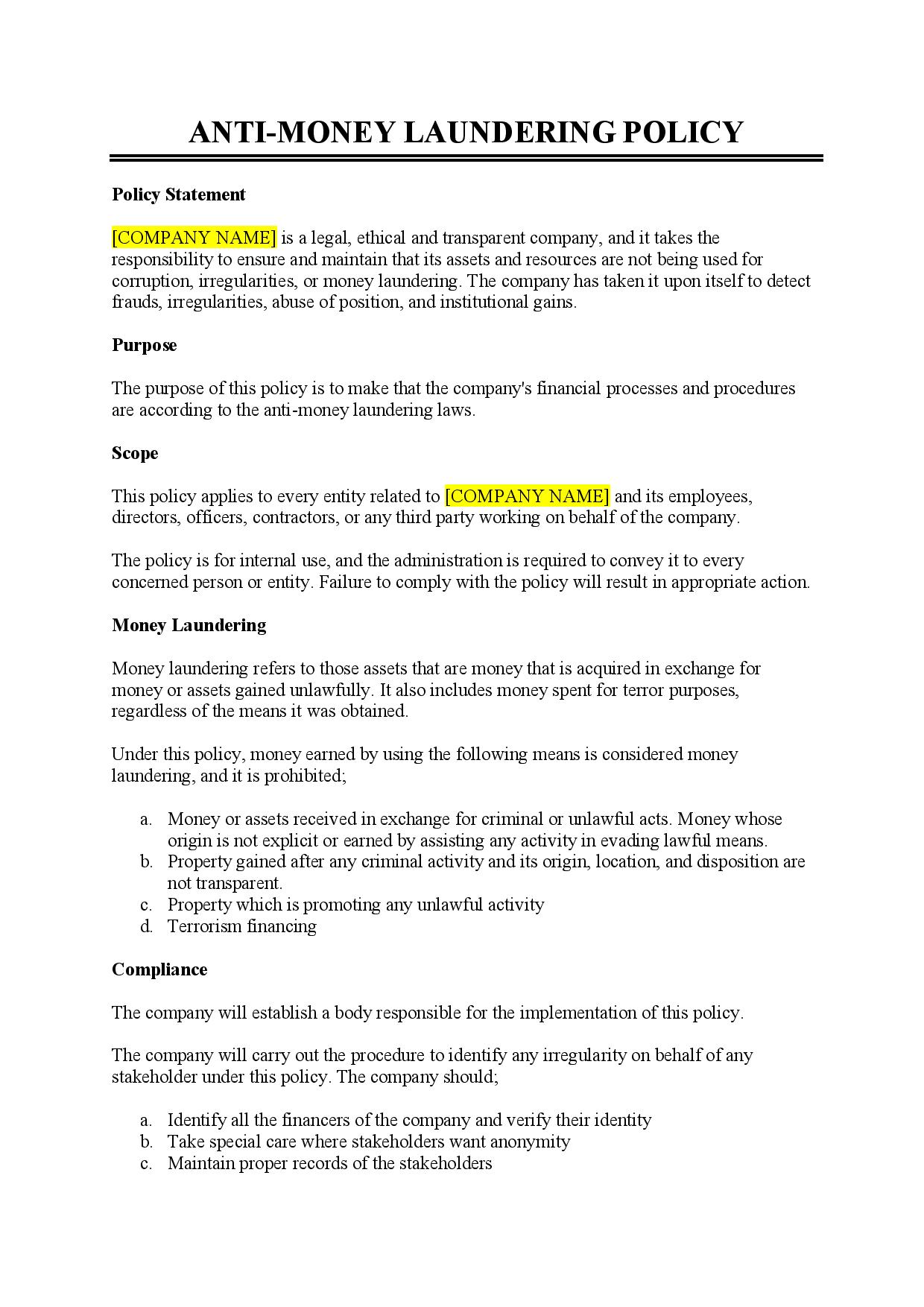Money laundering is a serious crime that can have devastating consequences for individuals, businesses, and the global economy. It is the process of disguising the origins of illegally obtained money to make it appear legitimate. This can be done through a variety of methods, such as hiding the money in shell companies or using it to purchase assets. To combat money laundering, governments around the world have implemented anti-money laundering (AML) regulations.
These regulations require businesses to have AML policies and procedures in place to help prevent and detect money laundering. An AML policy template can help businesses create a comprehensive policy that meets the requirements of the relevant AML regulations. An AML policy template typically includes the following elements:

AML Compliance Considerations
To ensure compliance with AML regulations, businesses should consider the following factors when creating their AML policy:
- Customer Due Diligence (CDD): CDD is the process of collecting and verifying information about customers to identify and mitigate the risk of money laundering. This includes collecting information such as the customer’s name, address, and occupation.
- Suspicious Activity Reporting (SAR): Businesses are required to report any suspicious transactions to the relevant authorities. A suspicious transaction is any transaction that is out of the ordinary for the customer or that is suspected of being related to money laundering.
- Record Keeping: Businesses are required to keep records of all transactions for a minimum period of time. This information can be used to track suspicious transactions and to help law enforcement investigate money laundering cases.
- Training: Businesses are required to provide training to their employees on AML policies and procedures. This training should help employees identify and report suspicious transactions.
AML Best Practices
In addition to the minimum requirements set out in AML regulations, businesses can also implement a number of best practices to help prevent and detect money laundering. These include:
- Risk Assessment: Businesses should conduct a risk assessment to identify the risks of money laundering that they face. This assessment should take into account factors such as the type of business, the customer base, and the geographic location.
- Internal Controls: Businesses should implement internal controls to help prevent and detect money laundering. These controls should include measures such as dual authorization for transactions and regular audits.
- Third-Party Due Diligence: Businesses should conduct due diligence on third parties, such as customers, suppliers, and agents, to mitigate the risk of money laundering.
- Continuous Monitoring: Businesses should continuously monitor their transactions for suspicious activity. This can be done through the use of technology or by manually reviewing transactions.
Conclusion
Money laundering is a serious crime that can have devastating consequences for individuals, businesses, and the global economy. An anti money laundering policy template can help businesses create a comprehensive policy that meets the requirements of the relevant AML regulations and helps to prevent and detect money laundering.
By implementing effective AML policies and procedures, businesses can help to protect themselves from the risks of money laundering and contribute to the fight against this serious crime.
FAQ
What is an AML policy template?
An AML policy template is a document that provides guidance to businesses on how to develop an effective AML policy. It includes information on the key elements of an AML policy, such as customer due diligence, suspicious activity reporting, record keeping, and training.
Why do I need an AML policy template?
An AML policy template can help you to create a comprehensive AML policy that meets the requirements of the relevant AML regulations. It can also help you to identify and mitigate the risks of money laundering that your business faces.
What are the key elements of an AML policy?
The key elements of an AML policy include: customer due diligence, suspicious activity reporting, record keeping, training, and risk assessment. These elements are essential for businesses to comply with AML regulations and to help prevent and detect money laundering.